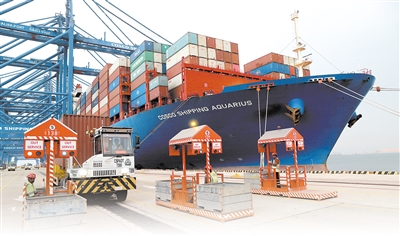Cultivate The Consumer Market Of The Belt And Road
Cultivate The Consumer Market Of The Belt And Road
For a long time, the markets of developed European and American countries have become the traditional export focus of Chinese companies with their mature consumption system and high purchasing power. However, with the profound adjustment of the global political and economic structure, trade protectionism has risen and geopolitical risks have intensified.
For a long time, the markets of developed European and American countries have become the traditional export focus of Chinese companies with their mature consumption system and high purchasing power. However, with the profound adjustment of the global political and economic structure, trade protectionism has risen and geopolitical risks have intensified, and the risks of over-reliance on European and American markets have become increasingly prominent.
At the same time, countries along the "Belt and Road" cover 65% of the world's population and 30% of the total economic output, forming an emerging consumer market with huge potential. Chinese companies urgently need to change their market strategies, turn their attention to the broader "Belt and Road" space, and cultivate new growth poles.
The "Belt and Road" market has unique strategic value.
This initiative connects Asia, Europe and Africa, covering Southeast Asia, the Middle East, Central Asia, Eastern Europe and other regions. Among them are fast-industrial emerging economies such as Indonesia and Vietnam, as well as high-income oil countries such as Saudi Arabia and the UAE, and many developing markets that are releasing consumption potential. These regions have a young population structure and accelerating urbanization process, and strong demand for infrastructure, digital economy, green energy and other products.
Taking Southeast Asia as an example, the scale of the region's Internet economy is expected to exceed US$360 billion in 2025, with an annual growth rate of e-commerce exceeding 20%, providing Chinese companies with an excellent opportunity to export digital products and services. More importantly, most countries in the "Belt and Road" pursue independent foreign policies, and are not affected by the Western camp's containment of China, and have relatively higher market stability.
Cultivating the "Belt and Road" market requires differentiated market strategies.
Unlike mature European and American markets, the consumer demand of the "Belt and Road" is characterized by diversification and stratification. Chinese companies should conduct in-depth research on the cultural customs, consumption habits and regulations of various countries and provide marketable products. In terms of product strategy, "high-end technology local adaptation" dual-track parallelism can be adopted: on the one hand, the output of machine tools, molds and other advantageous mechanical equipment to Central Asia, Southeast Asia and Africa; on the other hand, the development of "lightweight" products with affordable prices and practical functions for the Southeast Asia and Africa markets.
In terms of marketing channel construction, we must not only rely on cross-border e-commerce platforms to expand the online market, but also actively deploy overseas warehouses and local distribution networks. A Chinese home appliance company has developed large-capacity, cost-effective washing machines based on Pakistan's large family population, and quickly occupied the local market with annual sales growth of 300%.
Building a long-term cooperation ecosystem is the key.
Cultivating the market cannot be eager for quick success and instant benefits, but must be based on the long-term. Chinese enterprises should strengthen joint venture cooperation with local enterprises and achieve mutual benefit and win-win results through technology transfer and management experience sharing. When participating in the "Belt and Road" infrastructure project, we will simultaneously lay out supporting capacity and service networks to form a virtuous cycle of "construction-operation-consumption".
At the same time, we attach importance to fulfilling social responsibilities, respect local cultural traditions, and enhance brand reputation through public welfare activities. A Chinese-funded communications company not only builds network infrastructure in Africa, but also trains local engineers and funds educational projects. Its brand has established deep trust among local people.
Xinrui’s view: The trend of global economic center of gravity shifting eastward is irreversible, and the "Belt and Road" market is growing from potential stocks to main growth forces. For Chinese companies, this is not only an inevitable choice to diversify risks, but also a strategic opportunity to explore the blue ocean. Only by actively integrating into the local development process and winning market recognition with high-quality products and services can we achieve sustainable development in a broader world and build a truly global market map.
The "Belt and Road" is the growth curve in the next decade. Has your business already embarked on this path? Welcome to leave a message and exchange, and we will explore new paths for the globalization of Chinese enterprises. For more content about overseas travel, strategy and business management, please follow Xinrui Consulting.





